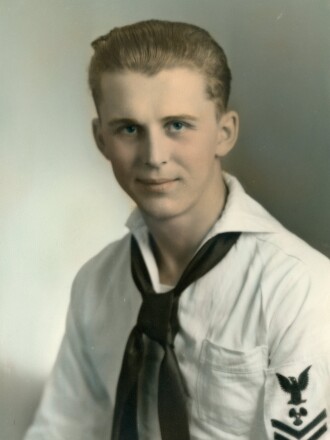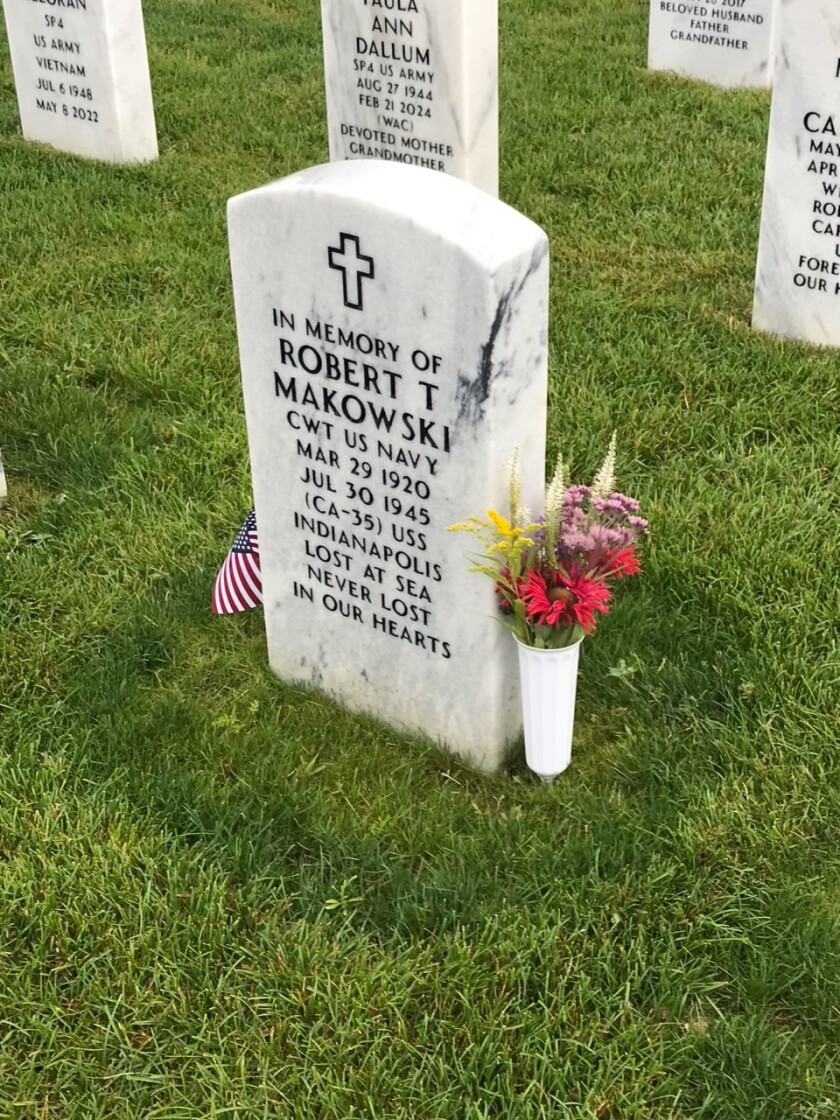SUPERIOR, Wisc. — The connection between the Richard I. Bong Veterans Historical Center and a veteran who served on the USS Indianapolis started with an anonymous letter.
“One of our volunteers bought a used book at a book sale and found this letter tucked into the book about the USS Indianapolis, so they brought it here,” said Briana Fiandt, director of collections and exhibits at the center.
ADVERTISEMENT

The letter is addressed “Dear Sis” and signed “Bobbie.” The writer talks about his trip across the country and what they did in Los Angeles before getting ready to serve on the USS Indianapolis. They "went to about 16,000 nickle movies" and had a "swell" time at a roller rink.
"We were the only 2 gobs there & we were popular. I never knew I could get around on skates so well but boy oh boy was I a whamdoodle!" Bobbie wrote.
More than a decade after that letter was found, the family of the letter's writer, U.S. Navy Chief Watertender Robert Makowski of Duluth, who was lost when the USS Indianapolis sank, is honoring him with a flag raising and a display at the Bong Center.
After the letter was published in a Bong Center newsletter, Robert Makowski's surviving family was convinced the letter was from him. Comparing handwriting, they found it was.
“It could have been lost forever easily and that was the only letter of that era that we had from him still around,” said Makowski’s nephew, Paul, who lives in Duluth. “It’s just a wonderful story because it’s full of his descriptions."
“You can just feel his personality coming off the page in the letter,” Fiandt said.
Paul Makowski said his uncle was an excited 20-year-old heading off to an adventure.
ADVERTISEMENT
A journey cut short
Robert Makowski was born March 29, 1920, in Duluth to parents Joseph and Teresa Makowski. He grew up in the Lester Park neighborhood and enlisted in the U.S. Naval Reserve in Duluth in April 1937, a couple months before he graduated from Duluth Central High ��������.
In late July 1940, then Fireman 2nd Class Robert T. Makowski and nine other men from the Duluth Naval Reserve traveled by train to Los Angeles, where they embarked on a U.S. Navy ship for transit to Pearl Harbor, Hawaii. On Aug. 9, 1940, all 10 men reported for duty aboard the USS Indianapolis.
That’s the journey that was chronicled in the letter, Paul Makowski said.
Robert Makowski was assigned to work in the boiler rooms on the Indianapolis, becoming a watertender 2nd class in 1942. By 1944, he worked his way up to chief watertender and was in charge of the “oil kings” on the Indianapolis.
Though most of the original 10 from Duluth transferred off the Indianapolis during World War II, Makowski and one other Duluth man remained on board the ship until its sinking in 1945.
Makowski was on the Indianapolis, which was several hundred miles southwest of Hawaii, when Pearl Harbor was attacked by the Japanese on Dec. 7, 1941. He was on the ship as it earned 10 battle stars for actions in the Pacific, the Aleutian Islands campaign, Tarawa, Saipan, Tinian, Guam, Iwo Jima and Okinawa operations. In February 1945, the Indianapolis was only 125 miles from Japan as the U.S. Navy attacked air bases in Japan in preparation for the operations at Iwo Jima.

On March 31, 1945, the Indianapolis was severely damaged near Okinawa when a Japanese kamikaze plane hit the ship, killing nine men and wounding 20. The ship limped back to San Francisco where it was repaired. Robert Makowski's younger brother James, who was serving aboard a Navy supply ship, was able to meet up with him in port.
ADVERTISEMENT
"They were only together 24 to 36 hours," said Paul Makowski. James, who is Paul's father, ran up to his older brother "And he gives him a great big bear hug on the ship."
It was the last time they would see each other.
The final mission for the Indianapolis was delivering components of the “Little Boy” atomic weapon to a forward air base on Tinian Island. After completing its mission, the Indianapolis left the Marianas Islands heading for the Philippines when it was struck by two torpedoes from a Japanese submarine, just a few minutes after midnight July 30, 1945. The ship sank in 12 minutes.
Reports have stated that as many as 900 out of the 1,195 men on board got off the ship before it sank. Many of the men had to deal with injuries as well as dehydration, exhaustion, sharks and exposure to hot daytime sun and cool nighttime temperatures before they were found Aug. 2.
Only 316 men survived the ordeal. Makowski was among the 879 men who lost their lives. The other Duluth man still serving on the Indianapolis, James Norberg, survived.
A ceremony delayed
Paul Makowski said his grandparents were devastated by his uncle’s death and never held a ceremony for him. Although his name is on a marker in Manila, Philippines, there wasn’t a local marker for him until January, when one was placed at the Minnesota State Veterans Cemetery–Duluth.

“So we look at it as really, in a sense a blessing because the cemetery did not exist in Duluth til 2018 roughly. That cemetery is very new,” Paul Makowski said. “The fact that it’s kind of pulling us all together and finally you know, finding out we can do this, we got everybody together.”
ADVERTISEMENT
Family members gathered to raise a flag in Robert Makowski’s honor at 9 a.m. Friday, Aug. 2, outside the Bong Center. The ceremony was part of the Flag of Remembrance Program sponsored by the Richard I. Bong American Legion Post 435.

The World War II veteran's story and pictures will be displayed in the center lobby through Aug. 9. The family will always have a tie to the center in Superior because the letter from "Bobbie" will remain in their archives.
The which was officially dedicated in September 2019, has 1,027 interments — 822 of them veterans, according to Cemetery Administrator Cory Johnson. To date, 18 of the site's 104 acres have been developed. Cemetery expansion will ultimately result in nearly 16,000 graves of all types being available, with roughly 100 years of interment capacity at the site. There is no residency requirement.
"So as long as a veteran, their spouse or dependent meets the National Cemetery Administration's requirements for burial benefits," Johnson said, "they would be eligible for interment in a Minnesota State Veterans Cemetery. It’s important for our veterans residing in Wisconsin to know that this may be an option for them."
Adding Makowski's marker to the cemetery, he said, is "one more step to ensuring his life, service and sacrifice will be remembered."













